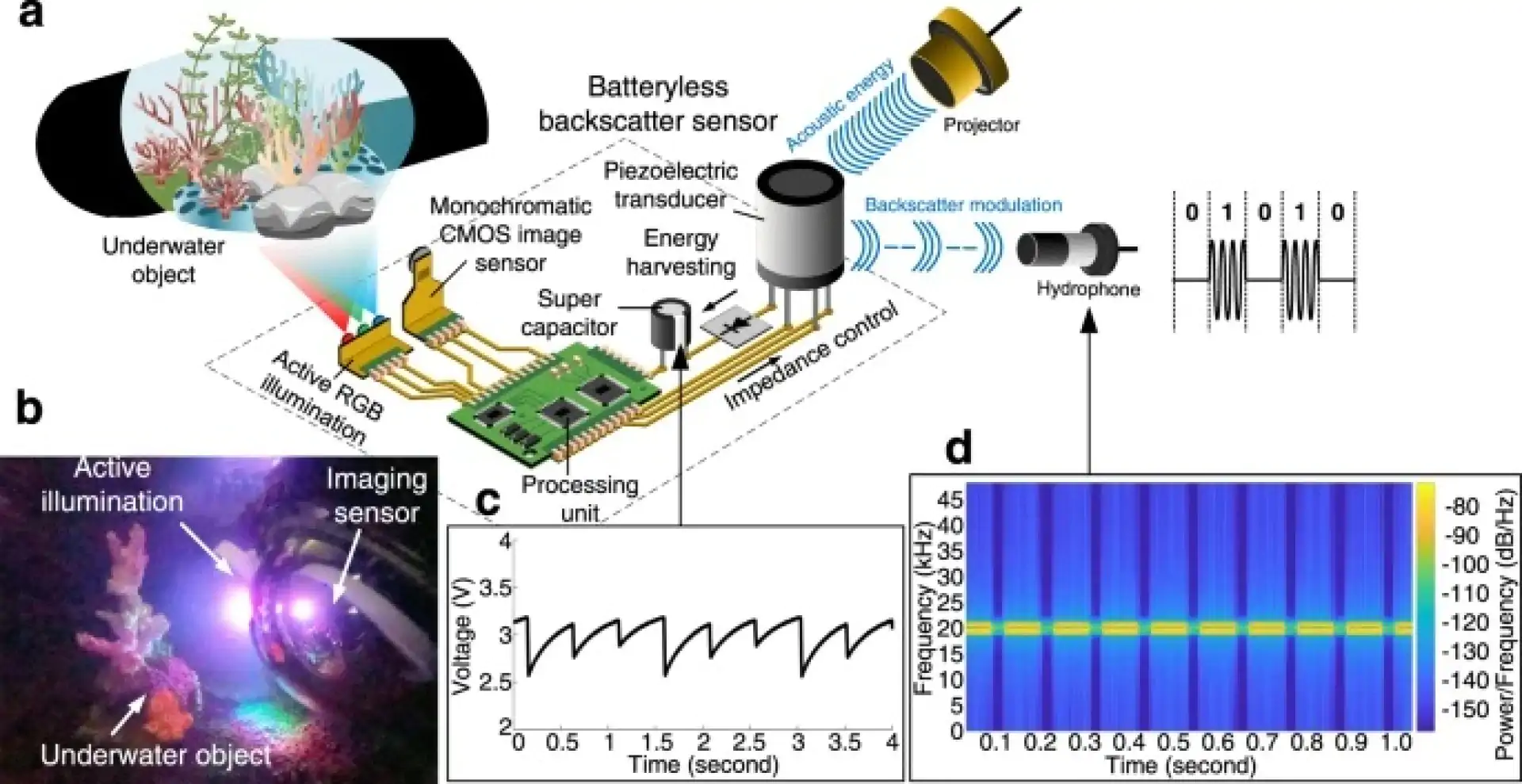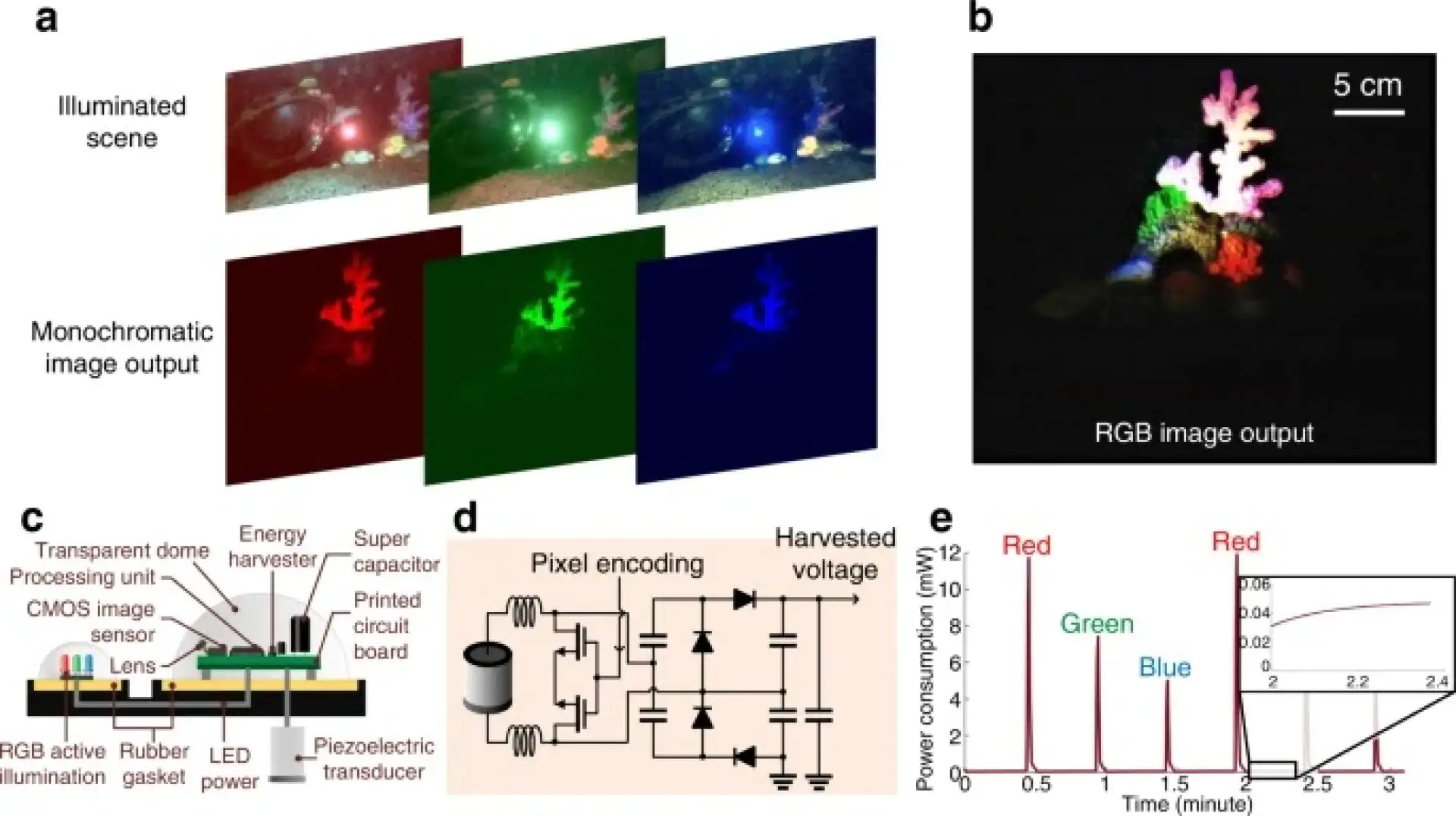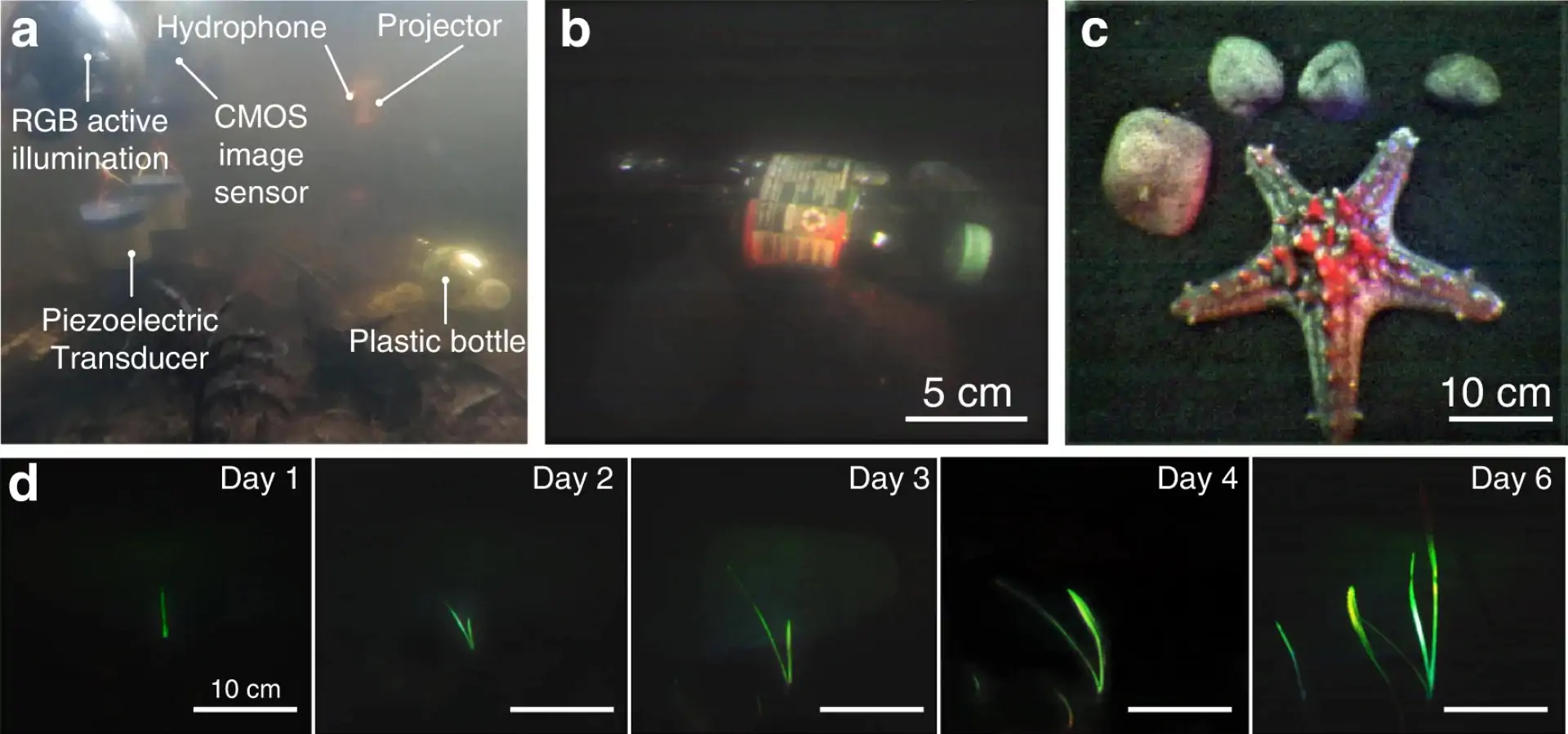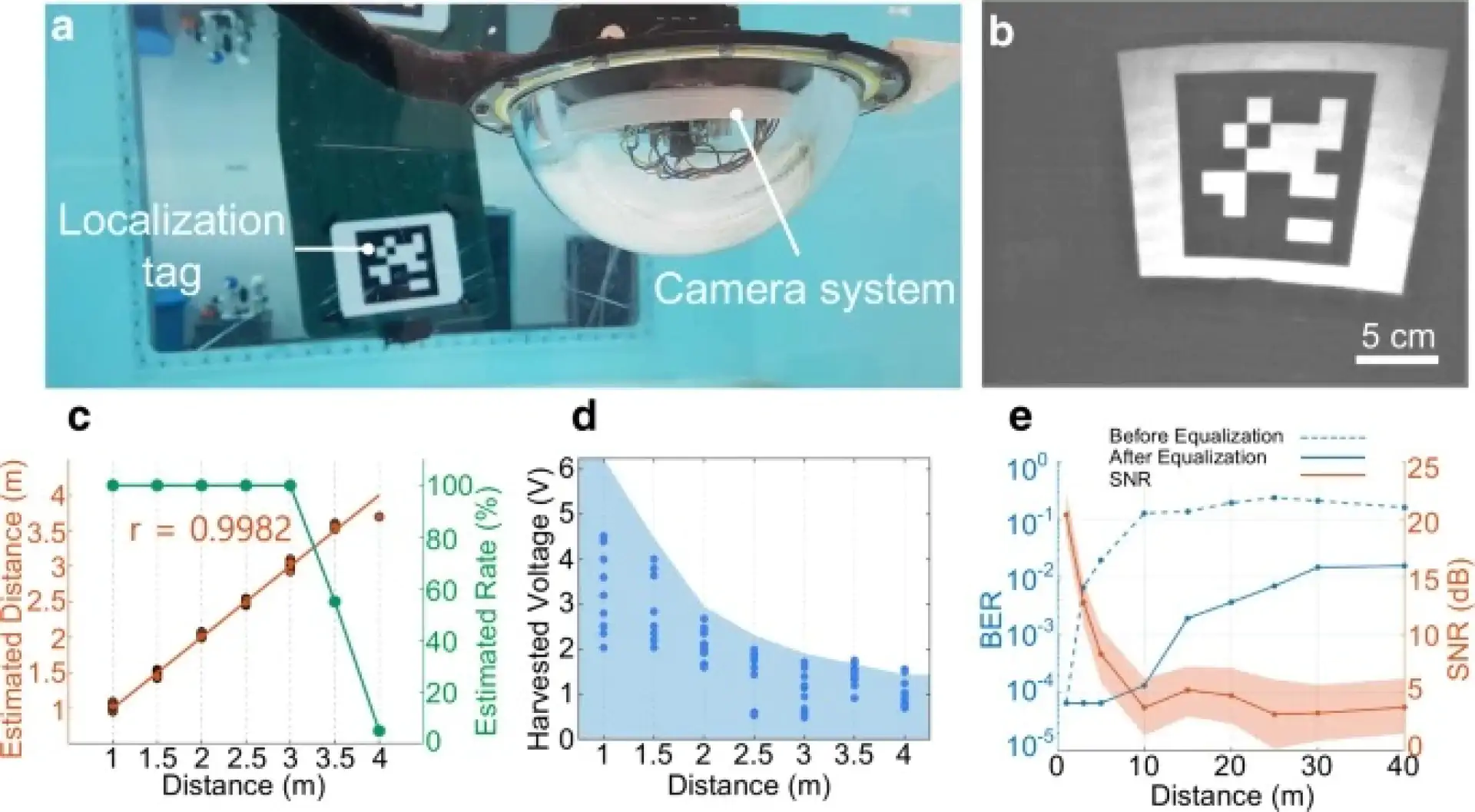A research team at the Massachusetts Institute of Technology (MIT) has devised a way to power an underwater camera with sound waves. The battery-free, wireless camera could be instrumental in charting or observing parts of the oceans that have never been seen before. It could also be used for mapping the effects of climate change and ultimately tracking pollution.
https://www.eurekalert.org/news-releases/965683
https://www.nature.com/articles/s41467-022-33223-x#Abs1
The study was performed at the MIT Department of Electrical Engineering and Computer Science and released in the journal Nature Communications.
The autonomous underwater camera
The camera, which was designed to be powered independently of a battery, runs on electric current but is generated from piezoelectric panels on its housing. The panels are acted on by sound waves, causing the panels to produce an electric charge, which is then transferred to a supercapacitor. The capacitor can hold an electrical charge, not unlike a battery, but in this case, the piezoelectric motion acts like a constant source of power.

NatureCommunication
It's hard to take underwater images
It is very difficult presently to take underwater photos and images autonomously over a long period. The nature of powering such devices is itself a limiting proposition. There must be a ship tethered to the camera providing power, or a ship must return periodically to a camera's location to charge batteries. Researchers have now taken a leap in solving the problem of powering undersea cameras.
100,000 times more efficient
The battery-free wireless camera is about 100,000 times more energy efficient than any other underwater camera used today. The camera can take high-resolution color photos, even in low-light scenarios and environments. It then transmits the data wirelessly to a base station.

Nature Communication
The camera is autonomous and can run indefinitely, powered by sound from the ocean. It converts mechanical energy from sound waves traveling through water into electrical energy that then powers communications and imaging. After the image data is collected and encoded, the camera then uses the sound waves that power it to transmit the data back to a receiver that can then reconstruct the data into images.
The camera can run for weeks all alone
Because it has its own power source, the autonomous camera can run for weeks or even months without needing a person to interact with it. It wouldn't need to be retrieved for long periods of time allowing scientists to map and photograph unknown portions of the ocean, searching for new species of animals and plants.

Nature Communication
“One of the most exciting applications of this camera for me personally is in the context of climate monitoring. We are building climate models, but we are missing data from over 95 percent of the ocean. This technology could help us build more accurate climate models and better understand how climate change impacts the underwater world,” says Fadel Adib, associate professor in the Department of Electrical Engineering and Computer Science and director of the Signal Kinetics group in the MIT Media Lab, and senior author of the paper.
Fighting climate change and more
He goes on to say when asked about the project's three most important applications.
"There are three main application areas we are very excited about: the first is underwater climate change monitoring - where the camera can be used to monitor the impact of climate change on marine ecosystems (corals, marine habitats, and others). The second is scientific exploration both on earth and in space - where the camera can be deployed over extended periods of time in the ocean to detect and image rare marine species or be included in future space missions (where energy efficiency is even more critical) where it can be used to search for life in extraterrestrial oceans like those on Saturn's moon, Enceladus, or Jupiter’s moon, Europa. The third application area, which is more immediate, is in aquaculture farms, where it can help monitor fish growth and enable early detection of environmental hazards to aid in food security."

Nature Communication
How it is built
In order to build a camera that is battery-free and doesn't need a tether to a power source, and to have it run autonomously for long periods of time, the team needed low-power consumption and a way to take the energy right from the water.
The camera gets its energy from transducers that are made from piezoelectric materials in the panels around the camera housing. Piezoelectric materials are able to produce electric charges from mechanical forces applied to them. When a sound wave hits the transducers, the vibration this causes is converted from mechanical energy into electrical energy.
Sound is everywhere under the sea
These sound waves happen all the time in the ocean, from passing ships to marine life, to the currents hitting objects. The camera harvests this energy and stores it in the supercapacitor until enough energy to power the camera's electronics has been reached.
Today, there are many ultra-low-power electronics that can be used to run autonomous vehicles. A tiny processor called a Field Programmed GATE Array, (FPGA) which is a computer chip that can be programmed to function in a number of different ways, is coupled to small microprocessors, which can operate the camera's propulsion, navigation, imaging, and communications systems, as well as regulate a high-efficiency, ultra-low-power electrical system.
There were challenges
Two of the challenges facing the team was the need for a low-power flash, for use in the often low-light environment in the ocean. They also needed low-cost, ultra-low-power imaging sensors. But the off-the-shelf, low-power sensors for imaging produced images in grayscale.
To solve these two issues, the team employed red, blue, and green LEDs, which offered a way around grayscale images. When an image is taken, it was taken by first shining a red LED and using image sensors to take the photo; then, the process is repeated with blue and green LEDs. This produces a grayscale image, where the colored light is reflected in the white part of the photo. The image data is then reconstructed on the computer into a color photograph.
All that is needed is red, green, and blue light from LEDs, to capture a color image on a computer.
Underwater backscatter
When image data is captured, it is then encoded as bits (1 and 0s) and sent to a receiver one bit at a time. This process is called underwater backscatter.
The receiver transmits a sound wave to the camera, which then reflects that sound like a mirror, back to the receiver. A hydrophone is placed beside the transmitter, which senses if the signal is reflected back, or not reflected back. Reflected is a bit 1, and not reflected is a bit 0.
The system builds a computer-constructed image right from the binary data, which is how all computer images are constructed. The image is then post-processed and reconstructed in a color image.
The future of battery-free autonomous underwater cameras.
The working prototype has a proof-of-concept and is now being developed even further.
"Today (literally) we are testing the next generation of our research in the Atlantic Ocean. A key focus for us now is to extend its wireless range to allow operation deeper and further into the ocean." Adib said to IE in a recent conversation.
This story is part of THE SOUND GUIDE, Interesting Engineering's special issue dedicated to all things sound and audio.
 SHOW COMMENT (1)
SHOW COMMENT (1)


Ryan Harne and his team created a material that can "think".

 The 'Sputnik Moment' upended the global order once, but won't do so again
The 'Sputnik Moment' upended the global order once, but won't do so again
 FIFA World Cup in Qatar: AC stadiums show how technology is shaping sports
FIFA World Cup in Qatar: AC stadiums show how technology is shaping sportsIn a first, researchers discovered a rare mineral that comes directly from Earth's lower mantle

DeLorean's Baja-themed 'Omega' concept really looks like it's from 2040



